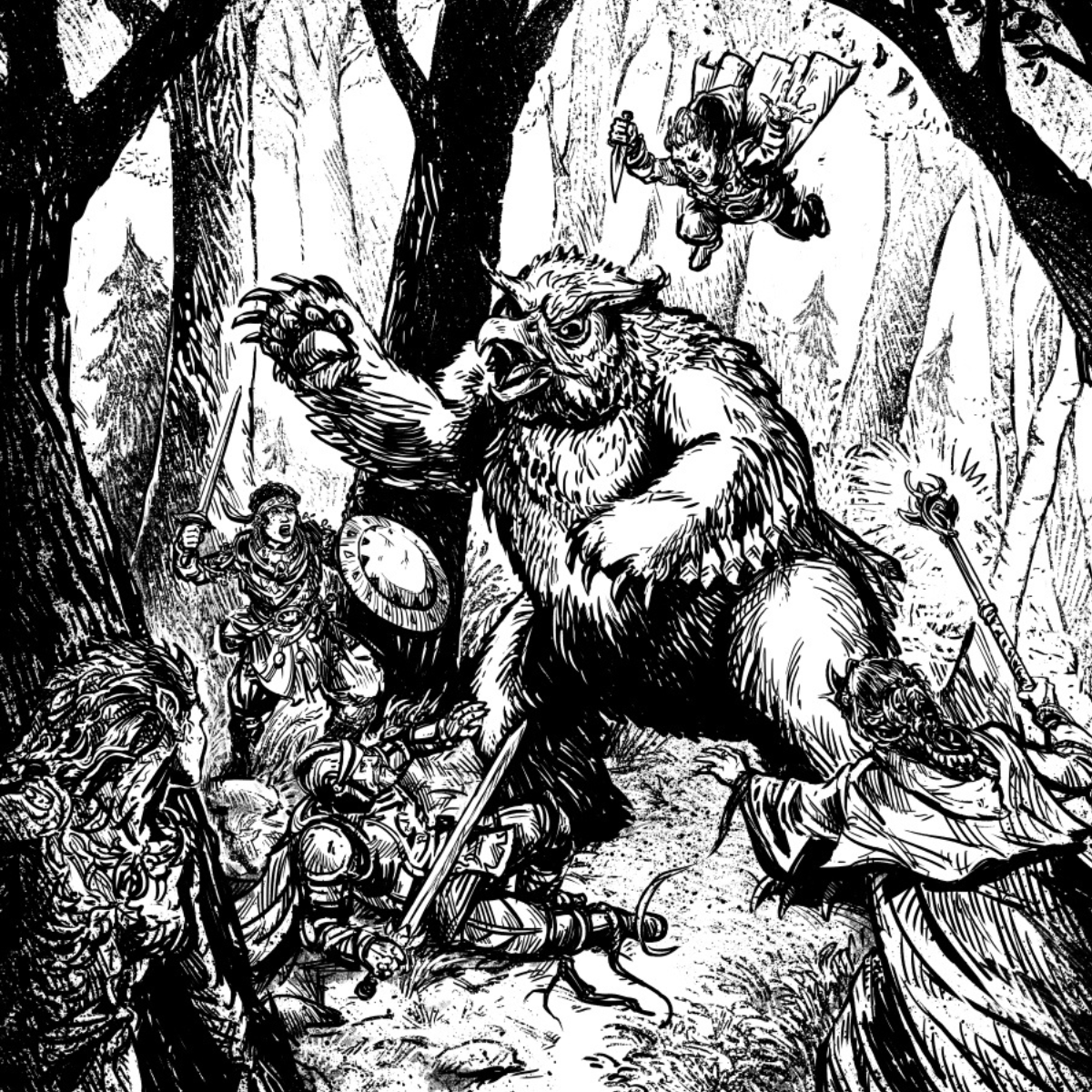12 Major Features of a Ruined City
Ruined cities are much more than a sea of rubble. Some places—major temples, towers and fortifications—will have survived in better conditions than others. In other places, the advanced decrepitude of the ruins create areas of heightened danger.
Use the list below, to add major features and the like into the characters’ exploration of a ruined city.
Art William McAusland
A network of cellars, basements and other subterranean passageways honeycomb the ground below this section of the ruins. Time’s remorseless onslaught has weakened their ceilings and supports; unwary characters may cause a local collapse and fall into the network.
Leering, moss-covered statues stand upon cracked and teetering plinths. The finely detailed statues are life-sized. Nothing more than decorations, some are unstable and fall if disturbed by adventurers searching for hidden storage niches and the like.
One windowless tower—standing slightly apart from nearby buildings—is in much better condition than its neighbours. Its roof is intact, and a bronze door, graven with many runes of dire and fell aspect, remains firmly shut.
The city’s cobblestones and flagstones are a strange shape—triangular, circular or the like. Some cobblestones have glyphs, sigils or personal marks scribed into them.
The city’s architects used a special kind of mortar in its walls; although faded and crumbling in many places the mortar is a strange colour, and might even have magical or quasi-magical properties.
Important buildings are a riot of decoration—beautifully carved reliefs and bas-reliefs cover most surfaces and depict important events in the city’s past. Many of these carvings were originally painted, and flecks of paint survive here and there to give a faint impression of faded grandeur.
A sea of jagged, tumbled rubble blocks the street, making further progress in this direction difficult. The rubble might also be unstable, and more than a mere inconvenience to unwary explorers.
Shades of the city’s fallen gather in this place—the place of their death. They are insubstantial shadows easily missed by unperceptive or distracted explorers. The shades are harmless and ignore explorers, instead repeatedly acting out the last few moments of their lives.
Either through happenstance or some lingering magical energy, the ruined city has its own small weather system, which is at odds to that of the surrounding area. (For example, if the city stands in a desert cold and rain often beset it while a city in the middle of a rainforest could be suffering extreme drought conditions.)
Some parts of the city are decrepit and prone to collapse. Those exploring without due care and attention could cause walls to collapse, floors to give way and so on. Additionally, combat in these areas is particularly hazardous as powerful spells and the like might have a similar effect on nearby walls, floors and ceilings.
The city was the site of savage fighting, during its fall. Skeletons, and other leavings of the elder battles lie scattered about the place. Some of the dead do not rest easily. The presence of warm-bloodied, living creatures re-animates them as weak, low-level undead such as skeletons and zombies. Individually, such encounters should be easy to defeat, but their frequency will eventually wear down all but the most powerful group’s resources and resolve.
Heroically-sized statues of important personages dot the ruins—standing in squares, at important road junctions and near important buildings. Some are weather worn, and covered in lichens, moulds and vines (as appropriate) while others are in pristine condition
Want More?
This article is an extract from 20 Things #48: Ruined City. Add the book to your GM’s toolkit today! Alternatively, check out the 20 Things Archive for more handy, flavoursome and time-saving 20 Things articles ready for immediate use in your campaign.
Design Creighton Broadhurst Art Matt Morrow

